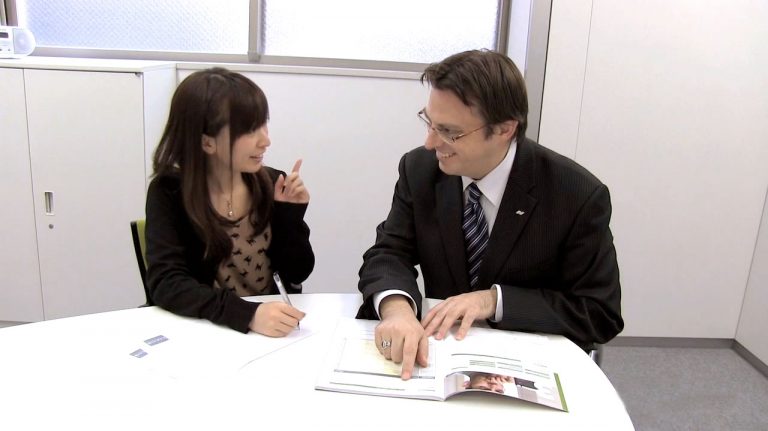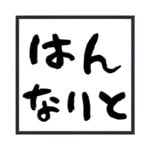
You never know when the opportunity to teach a private class may present itself. From high-school kids preparing for the Eiken tests to businesspeople who deal with overseas customers, each class presents different challenges. Especially challenging can be understanding the differences between having a big class and a one-on-one private lesson… the least of which is that the teacher is responsible for all the pair work!
To help to ease the transition into this different style of teaching, Jobs in Japan has put together a list of six things for teachers thinking about branching out into private classes to be aware of:
1. Don’t be afraid to use textbooks; however, only as a base.
Many private teachers seem averse to textbooks as if using them is admitting that they are incapable of creating their own classes. However, textbooks can be useful as they cut out some of the preparation time and offer structure to the lesson. The problem with textbooks, however, is that a lot of textbooks are designed to be taught with as little teacher input as possible.
Instead, the books should be used as a base upon which to add extra activities, such as free-talk activities, and extra material related to the topic. Even the most mundane topics can be made more interesting by adding extra materials and activities related to things like recent topics in the news.
2. Be aware of your environment.
When I first started teaching privately, I used to jump into the nearest seat and simply start teaching. While that may have to be the case at busy venues, if I have time and opportunity, it is always worthwhile looking at a few different seats to see which is best for the class. For example, many cafes in Japan blast the air conditioner to discourage people from staying for a long time and this can be maddening if you are directly under the machine. Similarly, if the café serves iced drinks, they may have a blender that makes so much noise, it makes the class unteachable when it is being used.
3. Prepare a strategy for dealing with rudeness
The enemy of English teachers everywhere is undoubtably Japanese old men. One time I was having a good, high-energy class at Starbucks, when suddenly one of the staff came up to us to tell us that apparently the old guys behind us had been complaining and could we kindly move to another seat. Unfortunately, the experience of being moved and feeling all eyes on her was too much for my student and she quit.
Most of the teachers that I talk to report similar experiences with old men complaining or even outright shouting at them in class, typically more for the benefit of making themselves feel better than for the public good. Generally, it is a good idea to sit as far away from them as possible and also to calmly and resolutely tell them that you are not moving or changing if something goes wrong.
4. On time is late.
The most important rule of teaching a private class is that punctuality is most important. Even mediocre teachers can be successful if they are good at timekeeping. It is important for teachers to remember that the student is literally paying for every minute of the class. A 10-minute late start to a 3000-yen-an-hour class, for example, is 500 yen of class time wasted.
Another factor to be wary of is waiting in line. Although coffee shops are becoming better at serving customers quickly, you may arrive 5 minutes early at some coffee shops, but not be sat down ready to teach until 10 minutes later if the café is particularly crowded or busy.
5. Decide your boundaries
Some teachers are willing to do language exchange or skills exchange for reduced payment, whereas others are willing to become friendly with their students and spend time with them after class. Not setting clear boundaries at the beginning, even at the risk of losing the client, can lead to complications later.
6. Budget.
About ten years or so ago, most of my money was coming from private classes; however, despite this I never seemed to have any money. Sure enough, I decided to crunch the numbers and I was surprised to see how much money I was spending without knowing it.
Some factors that I soon identified were:
- Beware multiple train lines. One student lived far away, and I was taking a subway followed by a JR train to get to the class, effectively almost doubling the train fare. Luckily apps like Google Maps, Jorudan, and JapanTransitPlanner let you plan your trip and see if there are cheaper ways to get there. You can also try to work out cheaper ways to get to class, such as using a subway pass or monthly unlimited ride pass (定期券, a teikiken).
- The cost of coffee. Luckily most coffee shops have cheaper options to expensive coffees, such as bottled water and tea. With water being so cheap, I was able to save 200 yen a class in some of the more expensive cafes. Failing that, in most cafes Americano is the cheapest coffee to order, often 100 yen cheaper than other coffees.
- Use cheaper areas for classes. Some students may live near community centers or even have a common space that can be used by anyone in the apartment. This can be an easy way to save money as often these can be used for free or for a nominal fee and, best of all, no need to buy a coffee. Pro-tip; a water bottle that you fill up from the water fountains most of these places have can be a great way to keep hydrated for free.
- Encourage students to invite a friend or partner along. Self-explanatory really, you can charge more and they save money and have a friend to spend time with.
Hopefully, this should give you some ideas to make sure that you’re first class is a success.



















